CODABAR
| “A numeric-only bar code type, in which each character is composed of seven elements: four bars and three spaces. CODABAR is currently used in a variety of applications such as libraries, medicine, and overnight package delivery. Also known as USD-4 code, NW-7, and 2 of 7 code, it was originally developed for retail price-labeling use.
Advantages of Codabar barcodes include ease of scanning and self-checking, which reduces errors when entering the code. However, Codabar codes are being phased out in favor of newer code forms, which allow more data to be stored in a much smaller form. Regardless, Codabar is still commonly used across logistics, healthcare and even schools, where the code is applied to the spines of library books.
Industry: Logistics, Healthcare and Education
“
| 
|
Code 39
| “A full alphanumeric bar code type composed of five bars, four spaces, and an intercharacter gap for each character. Code 39 is the standard for many industries, including adoption by the U.S. Department of Defense for its LOGMARS specification. Also known as USD-3 code and 3 of 9 code, it is one of three symbologies identified in the ANSI standard MH10.8M-1983.
Industry: Automotive and Defense”
| 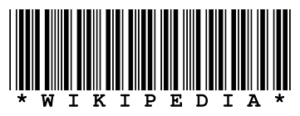 |
Code 49
| “An extremely compact, multi-row, continuous variable bar code type capable of encoding the full 128 ASCII character set. It is ideally suited to applications where large amounts of data are required in a small space. The code consists of 2 to 8 rows. A row consists of a leading quiet zone, 4 symbol characters encoding 8 code characters, a stop pattern, and a trailing quiet zone. Rows are separated by a one module high separator bar. Each symbol character encodes two characters.
“
|  |
Code93
| “Code 93 barcodes are used in logistics to identify packages in retail inventory, label electronic components, and even provide supplementary delivery information for the Canadian Post. Like Code 39, Code 93 barcodes come with full ASCII support. Along with enabling additional security within the code itself, the high density and compact size of Code 93s make them around 25% shorter than barcodes produced in Code 39.
Code 93 acts as a more compact and secure alternative to Code 39, partly thanks to its additional characters. Its small size and data redundancy make it ideal for use across a wide range of industries, from automotive to retail and logistics.”
| |
Code 128
| “A high density, variable length, full alphanumeric bar code type capable of encoding all 128 ASCII characters. It was designed for complex encoded product identification and is the basis of the UCC-128 marking specification. Code 128 has three subsets of characters. There are 106 printing characters in each set. Therefore, each character can have three different meanings, depending on the character subset used. Each Code 128 character consists of six elements — three bars and three spaces.
The greatest advantage of Code 128 is its high data density. These barcodes can store large amounts of linear data in compact form, making them ideally suited for identifying shipped or packaged containers and items. These strengths make Code 128 barcodes a natural choice for shipping and supply chain operations
Industry: Supply Chain”
| 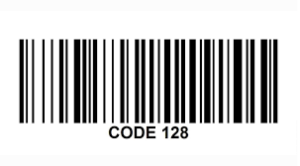 |
EAN
| “European Article Numbering system. The international standard bar code for retail food packages. The EAN-13 bar code type has 12 data characters, one more data character than the UPC-A code. An EAN-13 symbol contains the same number of bars as the UPC-A but encodes a 13th digit into a parity pattern of the left-hand six digits. This 13th digit, in combination with the 12th digit, represents a country code. The JAN-13 (Japanese Article Numbering system) is a special application of EAN-13.
The main advantage of EAN codes is their flexibility. EAN-13 is a high-density barcode that can encode relatively large amounts of data in a small area—while EAN-8 codes are ideal for identifying very small products or assets. EAN codes are also easy for 1D scanners to read, making the scanning process fast and seamless.
Industry: Retail”
|  |
QR
| “Quick Response. A retail industry initiative to improve inventory turnaround through the use of EDI, bar code scanning, and the sharing of merchandise movement data with vendors.
QR codes are most often used in tracking and marketing initiatives, such as advertisements, magazines and business cards. They are flexible in size, offer a high fault tolerance and have fast readability, though they can’t be read with a laser scanner. QR codes support four different modes of data: numeric, alphanumeric, byte/binary, and even Kanji. They are public domain and free to use.
QR codes offer exceptional versatility. They can be scanned on just about any device with scanning capabilities (including inexpensive smartphones)—and encode almost any type of data. QR codes also feature exceptional fault tolerance, allowing users to decode information even if part of the code is damaged.”
| 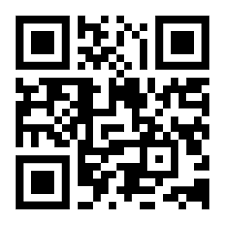 |
UPC
| “Universal Product Code. The standard bar code type for retail products in the United States.
In the context of retail, the purpose of this barcode is to make it easy for users to identify specific product features (like its size or color) when an item is scanned at checkout. Along with making the checkout process more efficient, UPC codes help streamline inventory tracking within stores and warehouses. UPCs enable accurate and efficient product tracking all the way through production to distribution.
Industry: Retail”
| 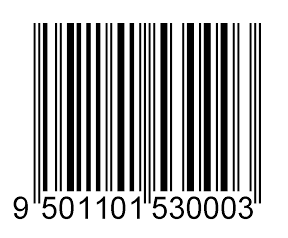 |
UPC-A
| A fixed length, numeric, continuous bar code type used primarily in the retail industry for labeling packages. The UPC-A symbol encodes a number system character, 10 digits of data, and a Mod 10 check digit for error correction.
| 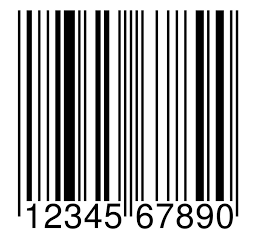 |
UPC-E
| A UPC symbol encoding six digits of data in an arrangement that occupies less area than a UPC-A symbol. The UPC-E bar code type is a shortened version of the UPC-A bar code type in which zeroes are suppressed, resulting in codes that require less printing space. Used for labeling small items.
| 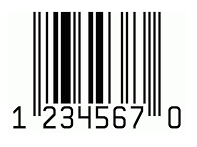 |